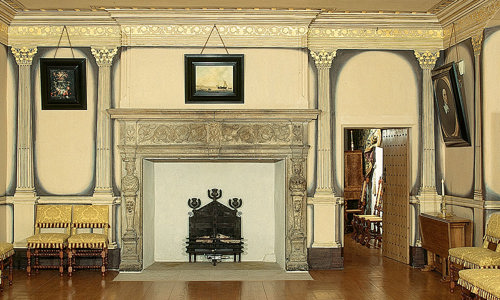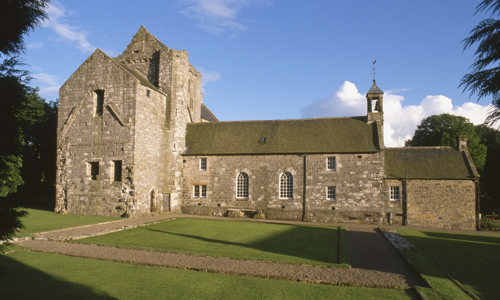History
On king’s command
King David I founded Cambuskenneth Abbey in about 1140, to serve the royal castle of Stirling. It was to have a similar role to Stirling Castle as:
- Holyrood Abbey to Edinburgh Castle
- Kelso Abbey to Roxburgh Castle
Most of the abbey was built in the 1200s, and much of the surviving structure dates from then. The abbey church, of which only the doorway survives, was laid out in a cross shape. It featured:
- an eight-bay nave with a north aisle
- a choir and a square-ended presbytery flanked by two transepts, each with two chapels
- a cloister to the south of the church
The free-standing bell tower, which still stands today, is unique in Scotland. Its lancet windows and ornamental arcades mark it as an excellent example of 1200s architecture.
Royal resting place
In 1488 the Battle of Sauchieburn took place 3 miles south of Cambuskenneth, between the armies of James III and his son, the future James IV. James III’s forces seem to have been overwhelmed and he was killed sometime during the rout. He was buried in front of the high altar at Cambuskenneth Abbey, next to his queen, Margaret of Denmark, who had died two years earlier.
Bones thought to belong to James III and Margaret of Denmark were excavated in 1864, and re-interred under a stone monument within what was the choir, by order of Queen Victoria.
State of ruin
In 1559, the abbey is said to have been ‘ruined and cast down’ by Reformers. In 1562, it passed into the hands of John Erskine, Earl of Mar, and it’s said he quarried the stones from the abbey to build Mar’s Wark, his town house near Stirling Castle.
The tower may have survived quarrying because it served as a useful lookout over the Carse of Stirling.
















